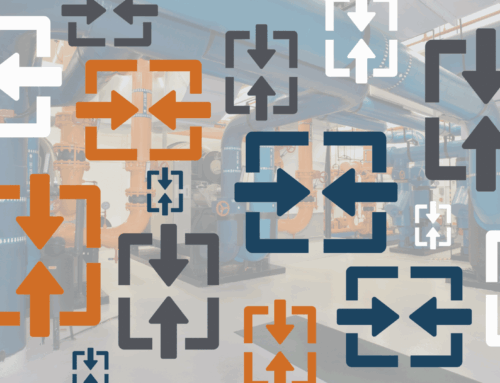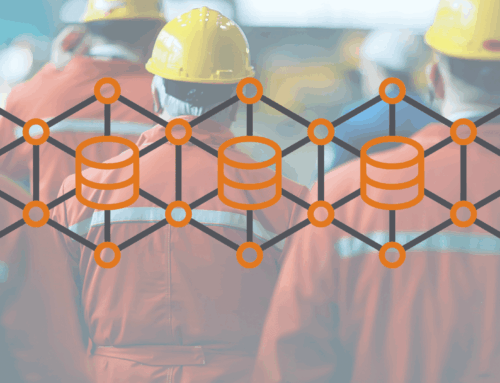District Energy, like many industries, faces rising operational costs, aging infrastructure, and growing customer expectations for reliable service. These factors are pushing organizations to reconsider how they manage and optimize their operations. While digital transformation promises benefits such as reduced energy costs and improved system reliability, organizations still struggle with the question: what now?
The answer lies in conducting a thorough assessment of current capabilities, challenges, and readiness. Without this foundation, even well-intentioned digitalization efforts can result in costly missteps, incompatible systems, and missed opportunities for meaningful improvement.
Know Your Digital Maturity Level
District energy digitalization isn’t a one-size-fits-all approach. And it isn’t a switch you flip. Instead, it’s a spectrum. Some organizations are just getting started with automated data collection; others are knee-deep in advanced analytics. The key is knowing where you fall on the spectrum and what kind of strategy makes sense for you.
If your systems are still mostly manual, you’ll face different hurdles than someone with a semi-integrated setup. Likewise, a team with sophisticated infrastructure may still struggle if it lacks cross-departmental alignment or user training. The goal is to build on what you already have. It’s not about ripping everything out and starting over.
Six Core Areas to Assess
Before you start choosing platforms or hiring consultants, take a step back and evaluate readiness across these six areas:
1) Organizational objectives and strategy provide the foundation, ensuring that digital initiatives align with organizational goals and deliver measurable value. Without clear objectives, digitalization efforts often become technology implementations in search of problems to solve.
2) Current data infrastructure represents the technical foundation for digital transformation. Organizations must understand what data they currently collect, how it’s managed, and what gaps exist. This includes evaluating data collection methods, storage systems, and accessibility across different user groups.
3) Technical infrastructure assessment examines the compatibility and integration capabilities of existing control systems, communication protocols, and data management platforms. This evaluation determines whether current systems can support new digital capabilities or require upgrades and replacements.
4) Data utilization and decision-making processes reveal how effectively organizations currently leverage available information. Understanding current analytical capabilities and decision-making workflows helps identify opportunities for improvement and ensures that members use new digital tools.
5) The challenges and opportunities assessment identifies both obstacles to implementation and areas where digital capabilities can deliver immediate value. This helps prioritize initiatives and develop realistic implementation timelines.
6) Implementation readiness assesses an organization’s capabilities, resources, and commitment necessary for a successful digital transformation. This includes budget allocation, internal expertise, and management support for change initiatives.
Common Digitalization Pitfalls
Many organizations mistakenly believe that installing new technology automatically improves performance. In reality, transformation fails when tools aren’t integrated, staff aren’t trained, or legacy systems get in the way. Assessment helps organizations understand these requirements upfront and plan accordingly.
Another frequent pitfall involves underestimating the complexity of integrating legacy systems. Older control systems may use proprietary communication protocols or lack modern connectivity options. The assessment identifies these challenges early, allowing organizations to budget for necessary upgrades or integration solutions.
Organizations also frequently overlook the importance of user adoption in digitalization success. Installing sophisticated analytics platforms is of little value if operators, engineers, and managers don’t understand how to utilize them effectively in their daily work. Assessment helps identify training needs and ensures that digital tools align with actual user workflows and requirements.
And don’t forget the budget. Digitalization involves more than just software. You may need hardware upgrades, cloud services, integration work, and ongoing support. Planning for all of that upfront prevents nasty surprises later.
Why Assessment Matters
A good assessment does more than audit your systems; it sparks conversation. When operations, IT, and leadership sit down together, they may realize they’ve been working with very different assumptions about what digital success looks like.
Assessment helps you:
- Identify gaps and strengths
- Align stakeholders
- Set realistic goals and budgets
- Track progress over time
It also establishes a shared digital maturity baseline that everyone can rally around as the transformation effort progresses. And most importantly, it prevents the expensive trial-and-error approach that turns promising digital initiatives into costly mistakes.
Building Your Digitalization Roadmap
Assessment results provide the foundation for developing a practical digitalization roadmap that balances organizational needs, technical constraints, and available resources. Rather than pursuing every possible digital capability simultaneously, successful organizations prioritize initiatives that deliver immediate value while building toward longer-term objectives.
The roadmap development process considers both quick wins that can demonstrate value early and foundational investments that enable future capabilities. For example, centralized data collection provides immediate visibility and grounds for advanced analytics.
Timeline planning is equally important, as organizations must coordinate digitalization efforts with ongoing operations, maintenance schedules, and budget cycles. Assessment shines a light on the scope and complexity of required changes, enabling realistic scheduling that minimizes operational disruption.
Ready for the Next Step
District energy digitalization presents an opportunity to reduce costs, enhance efficiency, and improve reliability. However, success requires careful planning based on a thorough understanding of current capabilities, organizational needs, and implementation challenges.
The most successful digitalization initiatives begin not with technology selection but with a comprehensive assessment that provides a clear picture of where you are today and where you want to go. This enables more informed decisions about technology investments, develops realistic implementation plans, and avoids common pitfalls that derail digital transformation efforts.
Ready to evaluate your digitalization readiness? Our self-assessment questionnaire helps district energy organizations identify opportunities, understand challenges, and develop strategic approaches to digital transformation. Take another step toward more efficient, reliable, and cost-effective operations today.






